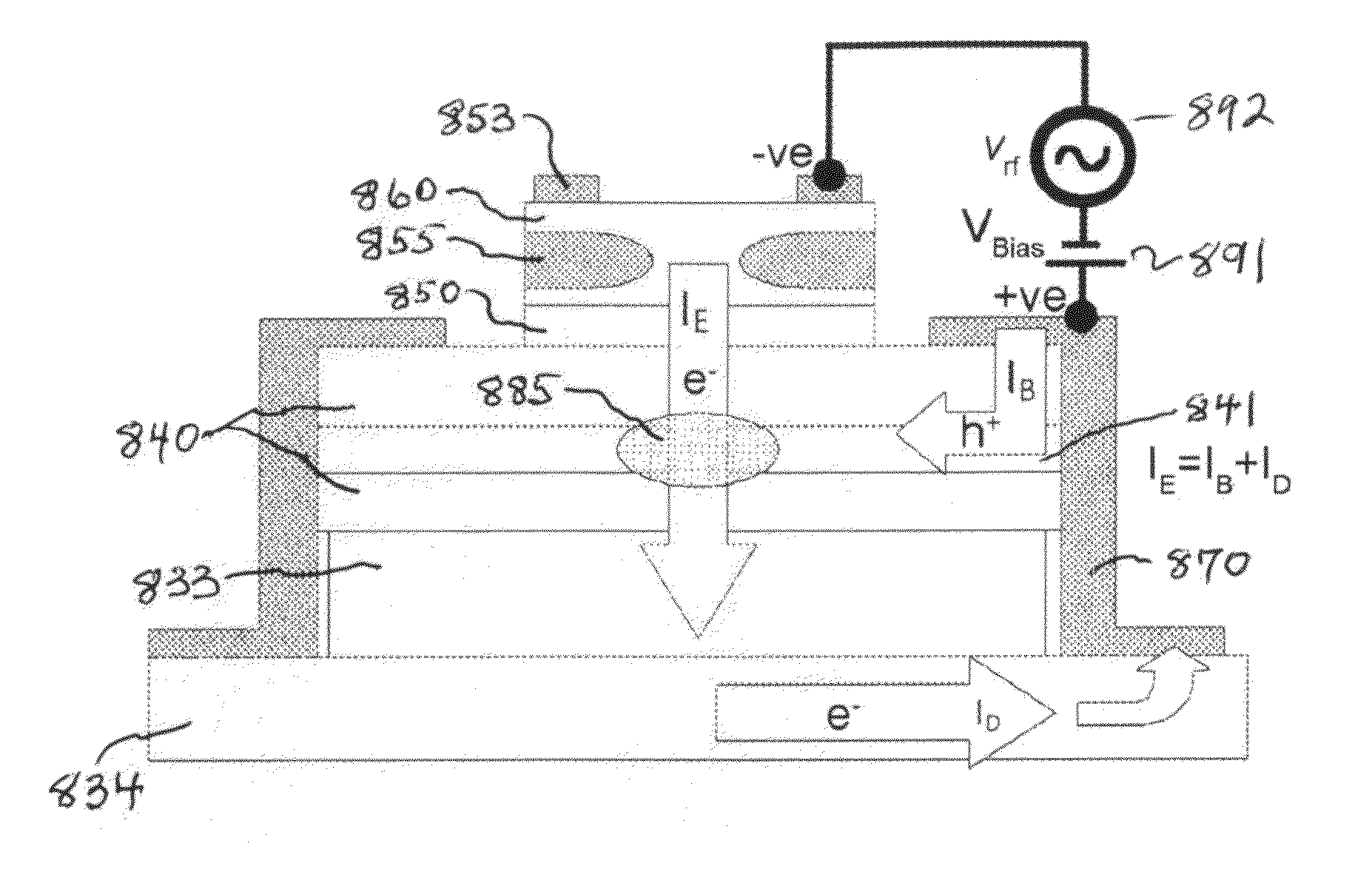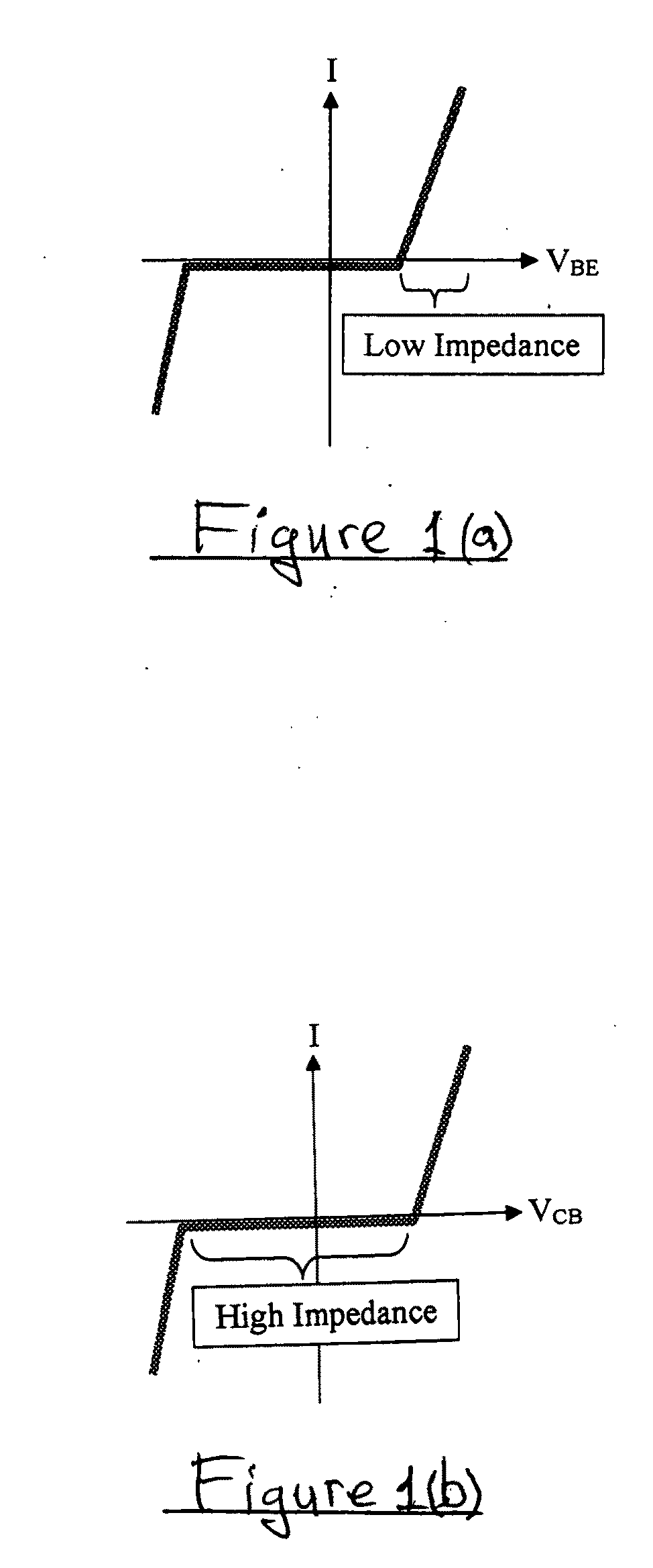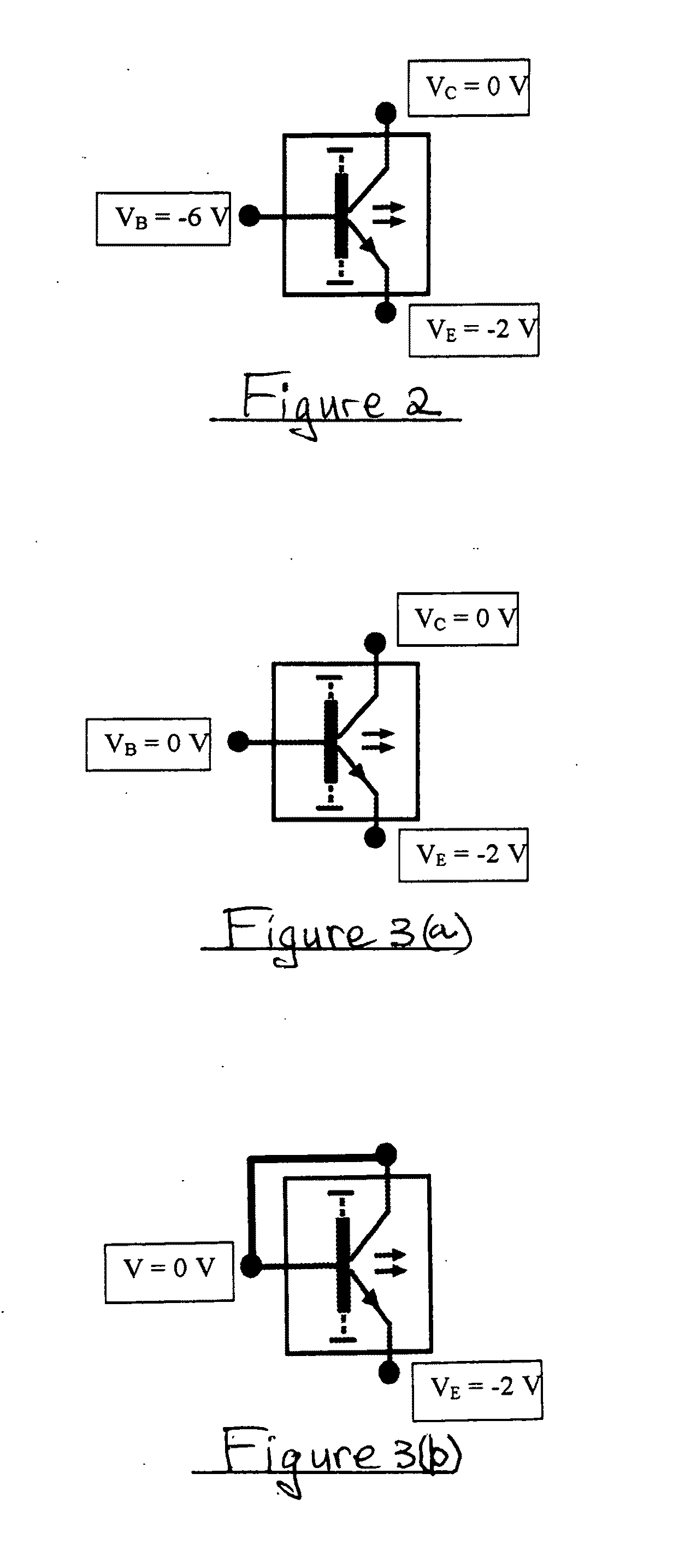Two terminal light emitting and lasing devices and methods
a technology of light-emitting and lasing devices, which is applied in the direction of lasers, semiconductor devices, semiconductor lasers, etc., can solve the problems of increasing bulky consumer products, increasing design complexity, and increasing cost and power consumption of vcsel-based optical solutions, so as to reduce the cost of lithography, and reduce the cost of manufacturing and packaging
- Summary
- Abstract
- Description
- Claims
- Application Information
AI Technical Summary
Benefits of technology
Problems solved by technology
Method used
Image
Examples
Embodiment Construction
[0031]Applicant has determined that the intrinsic fast operation of the light emitting transistor or transistor laser can still be maintained in a two terminal device (single electrical input port device) by replacing the collector junction with a drain. The drain serves the same purpose of allowing excess electrons to exit the N-P (Emitter-Base) junction of the device. However, it eliminates the functionality of this excess current (since it is no longer excess current to be collected but rather eliminated) by draining the electrons towards non-radiative recombination at the common contact. The drain is required to operate at high impedance mode, which can be achieved by having a common bias with the P-terminal of the base.
[0032]Referring to FIG. 4, there as shown a device in accordance with an embodiment of the invention and which can be used in practicing an embodiment of the method of the invention. The device can be fabricated using, for example, conventional semiconductor depo...
PUM
 Login to View More
Login to View More Abstract
Description
Claims
Application Information
 Login to View More
Login to View More - R&D
- Intellectual Property
- Life Sciences
- Materials
- Tech Scout
- Unparalleled Data Quality
- Higher Quality Content
- 60% Fewer Hallucinations
Browse by: Latest US Patents, China's latest patents, Technical Efficacy Thesaurus, Application Domain, Technology Topic, Popular Technical Reports.
© 2025 PatSnap. All rights reserved.Legal|Privacy policy|Modern Slavery Act Transparency Statement|Sitemap|About US| Contact US: help@patsnap.com



